- Home
- Bobby Akart
Virus Hunters 2: A Medical Thriller
Virus Hunters 2: A Medical Thriller Read online
Virus Hunters
A Medical Thriller | Part Two
Bobby Akart
Contents
Introduction
Virus Hunters
Foreword by Dr. Harper Randolph
Real World News Excerpts
Part I
In politics, nothing happens by accident
Chapter 1
Chapter 2
Chapter 3
Chapter 4
Chapter 5
Chapter 6
Chapter 7
Chapter 8
Chapter 9
Chapter 10
Chapter 11
Chapter 12
Chapter 13
Chapter 14
Part II
Who is Patient Zero?
Chapter 15
Chapter 16
Chapter 17
Chapter 18
Chapter 19
Chapter 20
Chapter 21
Chapter 22
Chapter 23
Chapter 24
Chapter 25
Chapter 26
Chapter 27
Chapter 28
Part III
Find the Truth
Chapter 29
Chapter 30
Chapter 31
Chapter 32
Chapter 33
Chapter 34
Chapter 35
Chapter 36
Chapter 37
Chapter 38
Part IV
Hiding in the Shadows
Chapter 39
Chapter 40
Chapter 41
Chapter 42
Chapter 43
Chapter 44
Part V
Follow Your Nose
Chapter 45
Chapter 46
Chapter 47
Chapter 48
Chapter 49
Virus Hunters Part 3
A Note from the Author
Acknowledgments
About the Author, Bobby Akart
Other Works by Amazon Top 25 Author Bobby Akart
Introduction
Thank you for downloading VIRUS HUNTERS: Part Two of the Virus Hunters trilogy by Author Bobby Akart.
For a copy of my critically acclaimed monthly newsletter, The Epigraph, updates on new releases, special offers, and bonus content visit me online at
BobbyAkart.com
or visit my dedicated feature page on Amazon at
Amazon.com/BobbyAkart
Virus Hunters
A Medical Thriller | Part Two
by
Bobby Akart
Foreword by Dr. Harper Randolph
Spring 2020 - The year we discovered the SARS-CoV-2, COVID-19 global pandemic.
In the story of humanity, communicable diseases play a starring role. From the bubonic plague to cholera to HIV, we have been locked in a struggle for supremacy with deadly maladies for millennia. They attack our bodies with impunity and without prejudice. They’re a merciless enemy, just one-billionth our size, and they’ve existed on Earth longer than man.
In 2020, we were a world under siege. In America, with the whole of the nation in the midst of a declared national state of emergency, most communities were ordered to abide by a mandated lockdown. Infections totaled over a million and deaths were recorded in the tens of thousands. The efforts to protect public health from this novel coronavirus was a striking example of this continuing war. As governments and health authorities battled to stop the spread of the new virus, they considered lessons from history.
As epidemiologists, we strive to understand the exact effects and nature of any strain of virus, a relative of the common cold. Our greatest concern is accepting that this information can remain unknown for months as scientists gather evidence as to its origin, spread, and immunology.
Experts are concerned about the speed at which the disease can mutate. Oftentimes, its presumed that animals may have been the original source—as was the case with severe acute respiratory syndrome, SARS, another virus in the same family as coronavirus—reflecting the proximity that millions in China share with livestock and wild animals.
Once an outbreak occurs and is identified, governments must grapple with a response. Today’s strategy of containment—one of the key measures deployed against endemic diseases—would be familiar to civil authorities and medical personnel as far back as the ancient world. The concept of a quarantine has its roots in the Venetian Republic’s fourteenth-century efforts to keep out the plague by blocking boat travel.
But the maritime power would have been hard-pressed to institute a cordon sanitaire on a scale required in China, where many of these infectious diseases originate. Using the early outbreak of COVID-19 by way of example, the ability to lock down the presumed place of origin, Wuhan, a city equal in size and population to the entirety of Los Angeles County, was a reflection of the power of China’s Communist-authoritarian rule. To stop the spread of the disease, every citizen of Wuhan was ordered to stay in their homes. No exceptions for essentials. No excuses to visit a friend. No walks in the park. No mowing of grass. It was a severe measure, strictly enforced.
In 2020, mistrust and politics played a role as well. The Centers for Disease Control and Prevention has always been dedicated to identifying, containing, and eradicating diseases of all types. Too often, however, the CDC had become a political football, but not one handed off or passed from one side of the aisle to the other. Rather, the CDC was often punted, kicked, and fumbled as a result of never-ending budget battles or desires to use the agency’s efforts to exploit its findings for political gain.
Misinformation and disinformation are also still prevalent, as they have been in the past. During the outbreak of Spanish flu in 1918–19, conspiracy theories of enemy bioweapons circulated. During an 1853 outbreak of yellow fever in New Orleans, immigrants were to blame. On social media during the COVID-19 pandemic, wild claims were circulating that the coronavirus was exacerbated by 5G cell phone towers. Fear and mistrust may be one of the greatest challenges we face in eliminating infectious diseases.
Technological changes have proved to be a double-edged sword. Modern diagnostic techniques have sped up identification, while data science has made it easier to track the spread of a contagion. But some advances, such as improved modes of transportation, have contributed to the rapid proliferation of infectious diseases around the globe.
Even global health cooperation has been less than straightforward. The conversation has far improved from 1851 when European nations sought to standardize maritime quarantines. Yet the World Health Organization, despite its message of worldwide solidarity and cooperation, continues to exclude Taiwan from key meetings and information sharing, under Chinese pressure. China, one of the most secretive nations on Earth, continues to closely guard information and delay announcements concerning outbreaks for economic and geopolitical reasons. Both of these examples are the kinds of unnecessary risks that create windows of opportunity for infectious diseases to proliferate. Frankly, pandemics and politics do not mix well.
However, perspective is needed. SARS, a disease that spread worldwide within a few months in 2002, gripped the nation’s headlines, but killed fewer than 800. The perennial scourge of influenza concerns most pandemic watchers. An estimated fifty to one hundred million died from the Spanish flu during a time when commercial air, rail, and auto travel didn’t exist. Even with modern medicine, the CDC estimates an average of 34,000 Americans die from influenza each flu season.
Outbreaks of unidentified diseases demand our vigilance and study. Novelty does not necessarily make them inherently more dangerous than older foes, only more difficult to esta
blish testing, treatment, and vaccination protocols.
I will leave you with this. Deadly outbreaks of infectious diseases make headlines, but not at the start. Every pandemic begins small, subtle, and in faraway places. When it arrives, it spreads across oceans and continents, like the sweep of nightfall, killing millions, or possibly billions.
Know this. Throughout the millennia, extinction has been the norm, and survival, the exception. This is why the Virus Hunters, the disease detectives on the front lines, work tirelessly to keep these deadly infectious diseases from killing us all.
I am Dr. Harper Randolph and this is our story.
Real World News Excerpts
TIMELINE OF A PANDEMIC
December 31, 2019
MYSTERY PNEUMONIA INFECTS DOZENS IN CHINA’S WUHAN CITY
~ South China Morning Post
January 13, 2020
CHINA REPORTS FIRST DEATH FROM NEWLY IDENTIFIED VIRUS
~ KAISER FAMILY FOUNDATION Global Health Policy Report
January 21, 2020
FIRST TRAVEL-RELATED CASE OF 2019 NOVEL CORONAVIRUS DETECTED IN UNITED STATES ~ CDC Newsroom
February 26, 2020
CDC CONFIRMS FIRST POSSIBLE COMMUNITY TRANSMISSION OF CORONAVIRUS IN U.S. ~ CNBC
February 29, 2020
WASHINGTON STATE REPORTS FIRST CORONAVIRUS DEATH IN U.S.
~ CBS News
March 1, 2020
22 PATIENTS IN U.S. HAVE CORONAVIRUS, PRESIDENT SAYS ~ CNN
WORLD HEALTH ORGANIZATION DECLARES THE CORONAVIRUS OUTBREAK A GLOBAL PANDEMIC
~ CNBC, March 11, 2020
“In the past two weeks the number of cases outside China has increased thirteenfold and the number of affected countries has tripled,” WHO Director-General Dr. Tedros Adhanom Ghebreyesus said at a press conference at the organization’s headquarters in Geneva. “In the days and weeks ahead, we expect to see the number of cases, the number of deaths and the number of affected countries to climb even higher.”
Declaring a pandemic is charged with major political and economic ramifications, global health experts say. It can further rattle already fragile world markets and lead to more stringent travel and trade restrictions. WHO officials had been reluctant to declare a global pandemic, which is generally defined as an illness that spreads far and wide throughout the world.
WHO officials needed to “make it clear” that the world was in the midst of a pandemic, said Lawrence Gostin, a professor and faculty director of the O’Neill Institute for National and Global Health Law at Georgetown University.
It “is clear” the new coronavirus has been a pandemic and WHO was “behind the curve,” Gostin told CNBC on Tuesday.
PRESIDENT TRUMP DECLARES NATIONAL EMERGENCY OVER CORONAVIRUS
~ BBC News, March 13, 2020
U.S. President Donald Trump has declared a national emergency to help handle the growing outbreak of coronavirus. The move occurs two days after the outbreak being declared a pandemic by the World Health Organization.
The declaration loosens regulations on the provision of healthcare and could speed up testing. There are 1,701 confirmed cases of COVID-19 in the U.S. and 40 deaths.
Several U.S. states have taken measures to stem the infections rate, including banning large gatherings, sporting events and closing schools.
The virus originated in China last December, but Europe is now the epicentre of the global pandemic.
CORONAVIRUS NOW PRESENT IN ALL 50 STATES
~ NPR, March 16, 2020
Since the first coronavirus case was confirmed in the United States, the number of cases has risen rapidly. A large portion of U.S. cases are centered on New York City. New York state, Connecticut and New Jersey have accounted for about 50% of all U.S. cases and nearly 60% of all deaths from COVID-19 have been in these three states.
In some areas, there are signs of hope. The areas with the earliest outbreaks, such as California and Washington state, have claimed success at suppressing the disease. Six counties in the San Francisco area ordered their residents to shelter in place for three weeks.
Other areas, especially rural communities of the Mountain West and the Southeast, have reported little or no cases of the novel coronavirus. For the most part, no self-quarantine orders are being reported in these areas, thus far.
NEW YORK CITY DECLARED UNITED STATES OUTBREAK EPICENTER
~ ABC News, March 20, 2020
Public Health officials with the state of New York report that more than 15,000 people have tested positive for COVID-19 and account for roughly half of the infections in the country.
The vast majority of New Yorkers with the disease are in the New York City regions which Mayor Bill de Blasio calls the epicenter of this crisis warning that the outbreak will get worse as supplies dwindle.
Governor Andrew Cuomo, anticipating that the state’s medical care facilities will be hit hard by COVID-19, has ordered nursing homes and other long-term care facilities to accept coronavirus patients. The policy is intended to help clear in-demand hospital beds for sicker patients.
Some facilities have resisted the governor’s mandate who angrily defended his position during a news conference earlier today.
“They don’t have a right to object. That is the rule and that is the regulation, and they have to comply with that. If they can’t do it, we’ll put them in a facility that can do it.”
“Life is short, the art long, opportunity fleeting, experience treacherous, judgment difficult. The physician must be ready, not only to do his duty himself, but also to secure the cooperation of the patient, of the attendants and of externals.”
~ Hippocrates, Greek physician, father of medicine
“That which does not kill us, makes us stronger.”
~ Friedrich Nietzsche
And great earthquakes shall be in diverse places, and famines, and pestilences;
and fearful sights and great signs shall there be from Heaven.
~ Luke, Chapter 21, Verse 11
“He that will apply new remedies must expect new evils, for time is the greatest innovator.”
~ Sir Francis Bacon, English philosopher and stateman, 1561 - 1626
“But what does it mean, the plague? It’s life, that’s all.”
~ Author Albert Camus in The Plague, published 1947
Part I
In politics, nothing happens by accident
If it happens, you can bet it was planned that way.
~ President Franklin D. Roosevelt
Chapter One
Gold Palace Hotel
Fremont Street Experience
Downtown Las Vegas, Nevada
Dr. Harper Randolph shoved her hands into her jeans pockets and approached her number one, Dr. Elizabeth Becker, who’d been taking notes at the back of the room. The epidemiologists had worked around the clock since their departure from the Centers for Disease Control and Prevention. Once they hit the ground in Las Vegas, their investigation of the mysterious illness that had taken several lives over the weekend kept them running nonstop. Harper’s briefing in the Augusta Room at the Gold Palace Hotel had been a welcome respite from their disease detective work.
Then all hell broke loose.
They’d just finished up a two-hour assessment of what they knew about this novel disease. Harper had reached a conclusion. The answers to her many questions surrounding the deaths of the Chinese nationals staying at the hotel would be found elsewhere. Namely, China. She was just about to explain her opinions to Becker before she released the weary group for a break, when the doors to the conference room suddenly flew open.
“You’re not going anywhere,” a baritone voice bellowed. A captain in the Nevada Army Guard appeared with two armed guardsmen. The trio filled the space and blocked Harper’s exit.
“What?” she demanded without a hint of apprehension in her voice. She’d stared down more dangerous adversaries but never her fellow Americans with automatic weapons. “What’s this all about?”
&
nbsp; “By orders of Nevada governor George Rickey, this facility has been placed under strict quarantine, and everyone is to remain sheltered-in-place until further notice.”
Becker couldn’t hold back. “Why are we being quarantined? Do you have any idea who we are?”
“Doesn’t matter, ma’am. Everyone is to stay in place until we receive further orders. That includes all of you.”
Harper searched the man’s chest for a name tag or other form of ID. She didn’t understand stripes and bars and other forms of military identification indicating rank or time of service. She gave up on protocol and took the blunt approach. The captain picked up on her attempt to identify him.

 Geostorm The Collapse: A Post Apocalyptic EMP Survival Thriller (The Geostorm Series Book 3)
Geostorm The Collapse: A Post Apocalyptic EMP Survival Thriller (The Geostorm Series Book 3) Doomsday Apocalypse
Doomsday Apocalypse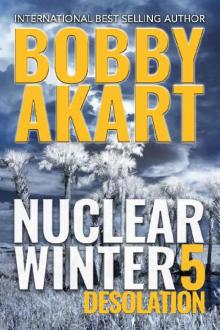 Nuclear Winter Desolation: Post Apocalyptic Survival Thriller (Nuclear Winter Series Book 5)
Nuclear Winter Desolation: Post Apocalyptic Survival Thriller (Nuclear Winter Series Book 5)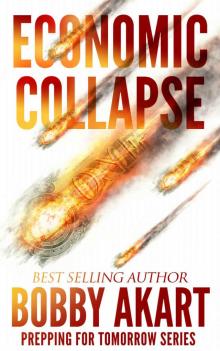 Economic Collapse (Prepping for Tomorrow Book 2)
Economic Collapse (Prepping for Tomorrow Book 2)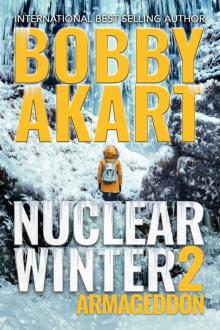 Nuclear Winter Armageddon
Nuclear Winter Armageddon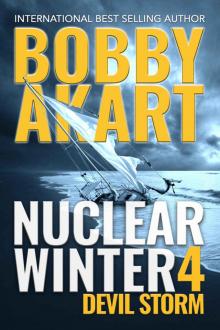 Nuclear Winter Devil Storm
Nuclear Winter Devil Storm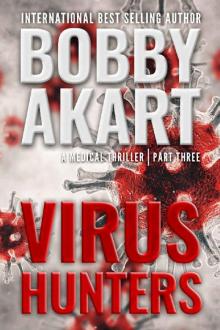 Virus Hunters 3: A Medical Thriller
Virus Hunters 3: A Medical Thriller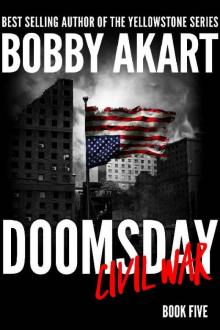 Doomsday Civil War: A Post-Apocalyptic Survival Thriller (The Doomsday Series Book 5)
Doomsday Civil War: A Post-Apocalyptic Survival Thriller (The Doomsday Series Book 5) Asteroid Destruction
Asteroid Destruction Geostorm the Shift
Geostorm the Shift Asteroid Discovery
Asteroid Discovery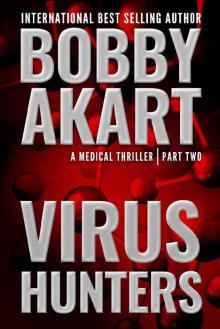 Virus Hunters 2: A Medical Thriller
Virus Hunters 2: A Medical Thriller Geostorm The Shift: A Post-Apocalyptic EMP Survival Thriller (The Geostorm Series Book 1)
Geostorm The Shift: A Post-Apocalyptic EMP Survival Thriller (The Geostorm Series Book 1) Asteroid Diversion
Asteroid Diversion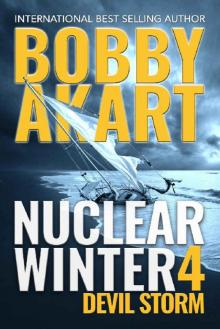 Nuclear Winter Devil Storm: Post Apocalyptic Survival Thriller (Nuclear Winter Series Book 4)
Nuclear Winter Devil Storm: Post Apocalyptic Survival Thriller (Nuclear Winter Series Book 4) Geostorm The Pulse: A Post Apocalyptic EMP Survival Thriller (The Geostorm Series Book 2)
Geostorm The Pulse: A Post Apocalyptic EMP Survival Thriller (The Geostorm Series Book 2)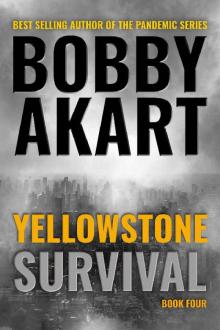 Yellowstone: Survival: A Post-Apocalyptic Survival Thriller (The Yellowstone Series Book 4)
Yellowstone: Survival: A Post-Apocalyptic Survival Thriller (The Yellowstone Series Book 4)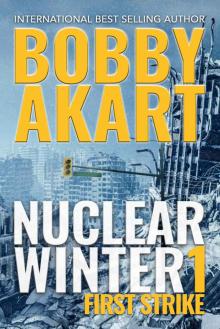 Nuclear Winter First Strike: Post-Apocalyptic Survival Thriller
Nuclear Winter First Strike: Post-Apocalyptic Survival Thriller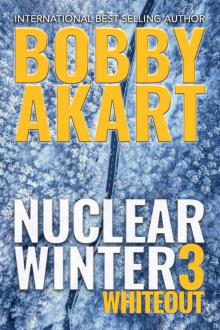 Nuclear Winter Whiteout
Nuclear Winter Whiteout Doomsday Anarchy
Doomsday Anarchy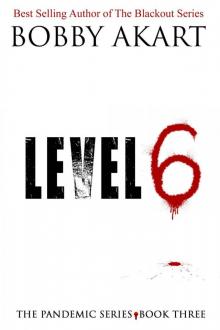 Pandemic: Level 6: A Post Apocalyptic Medical Thriller Fiction Series (The Pandemic Series Book 3)
Pandemic: Level 6: A Post Apocalyptic Medical Thriller Fiction Series (The Pandemic Series Book 3) Martial Law
Martial Law Odessa Reborn: A Terrorism Thriller (Gunner Fox Book 4)
Odessa Reborn: A Terrorism Thriller (Gunner Fox Book 4)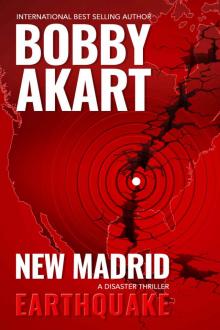 New Madrid Earthquake
New Madrid Earthquake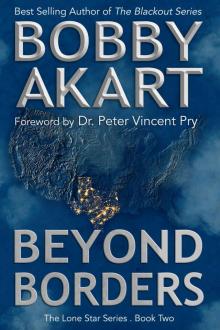 Beyond Borders: Post Apocalyptic EMP Survival Fiction (The Lone Star Series Book 2)
Beyond Borders: Post Apocalyptic EMP Survival Fiction (The Lone Star Series Book 2)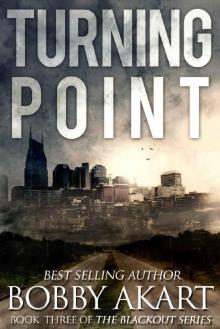 The Blackout Series (Book 3): Turning Point
The Blackout Series (Book 3): Turning Point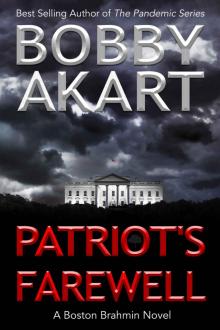 Patriot's Farewell: A Political Thriller Fiction Series (Boston Brahmin Political Thrillers Book 7)
Patriot's Farewell: A Political Thriller Fiction Series (Boston Brahmin Political Thrillers Book 7) Lines in the Sand_Post Apocalyptic EMP Survival Fiction
Lines in the Sand_Post Apocalyptic EMP Survival Fiction The Mechanics: A Post-Apocalyptic Fiction Series
The Mechanics: A Post-Apocalyptic Fiction Series The Loyal Nine
The Loyal Nine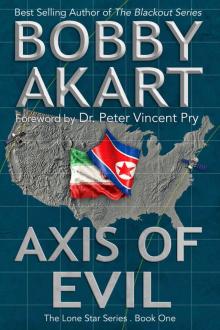 Axis of Evil
Axis of Evil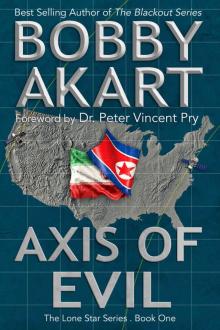 Axis of Evil: Post Apocalyptic EMP Survival Fiction (The Lone Star Series Book 1)
Axis of Evil: Post Apocalyptic EMP Survival Fiction (The Lone Star Series Book 1) Lines in the Sand: Post Apocalyptic EMP Survival Fiction (The Lone Star Series Book 3)
Lines in the Sand: Post Apocalyptic EMP Survival Fiction (The Lone Star Series Book 3) Odessa Strikes
Odessa Strikes The Blackout Series (Book 4): Shiloh Ranch
The Blackout Series (Book 4): Shiloh Ranch Hornet's Nest: A Post Apocalyptic EMP Survival Fiction Series (The Blackout Series Book 5)
Hornet's Nest: A Post Apocalyptic EMP Survival Fiction Series (The Blackout Series Book 5) Yellowstone: Fallout: A Post-Apocalyptic Survival Thriller (The Yellowstone Series Book 3)
Yellowstone: Fallout: A Post-Apocalyptic Survival Thriller (The Yellowstone Series Book 3) Electromagnetic Pulse
Electromagnetic Pulse Texas Strong: Post Apocalyptic EMP Survival Fiction (The Lone Star Series Book 4)
Texas Strong: Post Apocalyptic EMP Survival Fiction (The Lone Star Series Book 4) Fifth Column_Post Apocalyptic EMP Survival Fiction
Fifth Column_Post Apocalyptic EMP Survival Fiction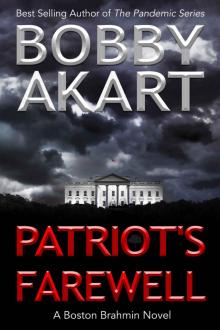 Patriot's Farewell
Patriot's Farewell Texas Strong_Post Apocalyptic EMP Survival Fiction
Texas Strong_Post Apocalyptic EMP Survival Fiction Pandemic: The Innocents: A Post-Apocalyptic Medical Thriller Fiction Series (The Pandemic Series Book 2)
Pandemic: The Innocents: A Post-Apocalyptic Medical Thriller Fiction Series (The Pandemic Series Book 2) Shiloh Ranch: A Post Apocalyptic EMP Survival Fiction Series (The Blackout Series Book 4)
Shiloh Ranch: A Post Apocalyptic EMP Survival Fiction Series (The Blackout Series Book 4) Cyber Attack
Cyber Attack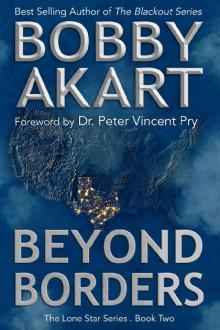 Beyond Borders
Beyond Borders Choose Freedom: A Post-Apocalyptic Fiction Series (The Boston Brahmin Book 6)
Choose Freedom: A Post-Apocalyptic Fiction Series (The Boston Brahmin Book 6) False Flag
False Flag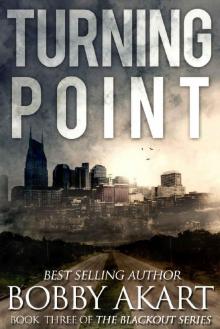 Turning Point: A Post Apocalyptic EMP Survival Fiction Series (The Blackout Series Book 3)
Turning Point: A Post Apocalyptic EMP Survival Fiction Series (The Blackout Series Book 3)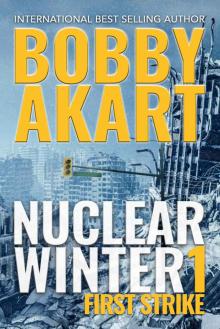 Nuclear Winter First Strike
Nuclear Winter First Strike Pandemic: Beginnings: A Post-Apocalyptic Medical Thriller Fiction Series (The Pandemic Series Book 1)
Pandemic: Beginnings: A Post-Apocalyptic Medical Thriller Fiction Series (The Pandemic Series Book 1) Devil's Homecoming: A Post Apocalyptic EMP Survival Fiction Series (The Blackout Series Book 6)
Devil's Homecoming: A Post Apocalyptic EMP Survival Fiction Series (The Blackout Series Book 6) The Blackout Series (Book 6): Devil's Homecoming
The Blackout Series (Book 6): Devil's Homecoming Yellowstone: Inferno: A Post-Apocalyptic Survival Thriller (The Yellowstone Series Book 2)
Yellowstone: Inferno: A Post-Apocalyptic Survival Thriller (The Yellowstone Series Book 2) Fifth Column: Post Apocalyptic EMP Survival Fiction (The Lone Star Series Book 5)
Fifth Column: Post Apocalyptic EMP Survival Fiction (The Lone Star Series Book 5) Yellowstone: Hellfire: A Post-Apocalyptic Survival Thriller (The Yellowstone Series Book 1)
Yellowstone: Hellfire: A Post-Apocalyptic Survival Thriller (The Yellowstone Series Book 1) The Blackout Series (Book 2): Zero Hour
The Blackout Series (Book 2): Zero Hour Suicide Six: Post Apocalyptic EMP Survival Fiction (The Lone Star Series Book 6)
Suicide Six: Post Apocalyptic EMP Survival Fiction (The Lone Star Series Book 6) Suicide Six_Post Apocalyptic EMP Survival Fiction
Suicide Six_Post Apocalyptic EMP Survival Fiction Zero Hour: A Post-Apocalyptic EMP Survival Fiction Series (The Blackout Series Book 2)
Zero Hour: A Post-Apocalyptic EMP Survival Fiction Series (The Blackout Series Book 2)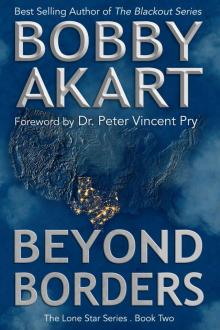 Beyond Borders_Post Apocalyptic EMP Survival Fiction
Beyond Borders_Post Apocalyptic EMP Survival Fiction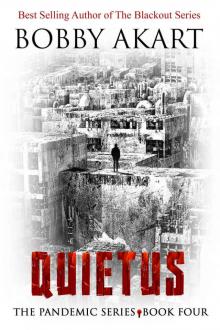 Pandemic: Quietus: A Post-Apocalyptic Dystopian Fiction Series (The Pandemic Series Book 4)
Pandemic: Quietus: A Post-Apocalyptic Dystopian Fiction Series (The Pandemic Series Book 4) 36 Hours: A Post-Apocalyptic EMP Survival Fiction Series
36 Hours: A Post-Apocalyptic EMP Survival Fiction Series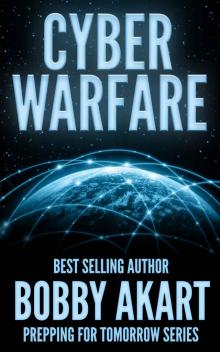 Cyber Warfare
Cyber Warfare